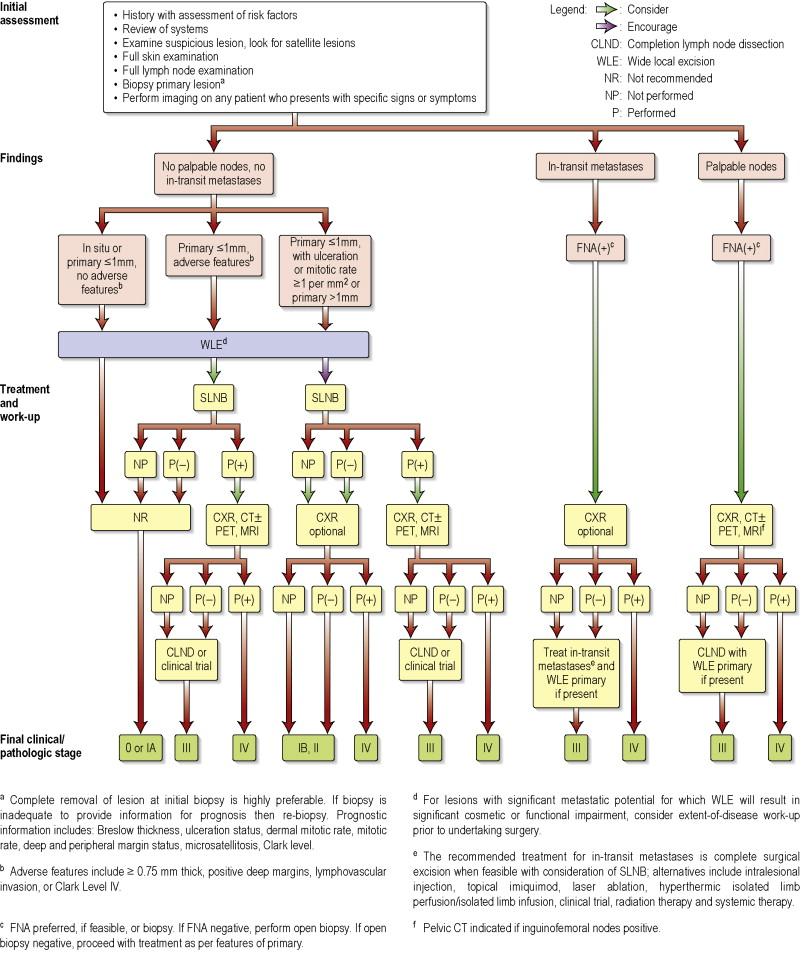Physical Address
304 North Cardinal St.
Dorchester Center, MA 02124
Melanoma management should be tailored to the needs of each individual patient.
Surgical excision is the cornerstone of melanoma management.
Sentinel lymph node biopsy is currently a staging and prognostic tool in the management of melanoma.
Adjuvant therapy should be considered in patients at high risk of recurrence.
Single drug chemotherapy remains the standard treatment for advanced metastatic disease. Clinical trials should be strongly considered for patients with metastatic melanoma.
Regular follow-up, skin self-examinations, and sun protection are important for patients with a history of melanoma and their family members.
Melanoma is increasingly recognized as a major public health concern due to a continued rise in incidence and mortality over the past few decades. Optimal management of a patient diagnosed with melanoma remains challenging, and the most effective strategies for reducing morbidity and mortality rely on prevention and early detection. A multifaceted approach is employed when deciding management of the primary site, staging procedures, adjuvant therapy, and follow-up.
Several guidelines for melanoma management have been set forth by different organizations, including the National Comprehensive Cancer Network (NCCN), American Academy of Dermatology, Society of Surgical Oncology, and the British Association of Dermatologists. The NCCN guidelines have been most recently updated and a practical representation of their recommendations on staging and initial management for common scenarios is provided in Figure 28.1 . The significant variations among these different published guidelines highlight the absence of a single ‘evidence-based’ approach for managing melanoma patients. Therefore, treatment should be tailored to the needs of each individual patient. This chapter presents a generalized approach to the diagnostic and staging work-up for melanoma, surgical management, adjuvant treatment, and post-treatment surveillance, and more detailed descriptions of each of these components.

Detailed discussions concerning the various stage-specific treatment modalities, including current practice, recent advances, and controversies, may be found in subsequent chapters.
Become a Clinical Tree membership for Full access and enjoy Unlimited articles
If you are a member. Log in here